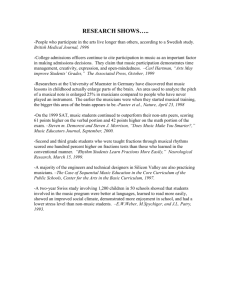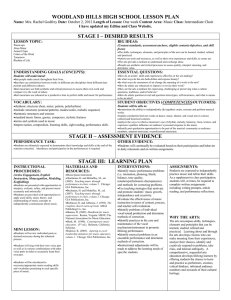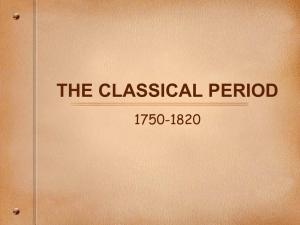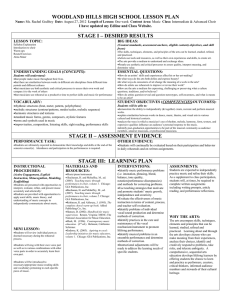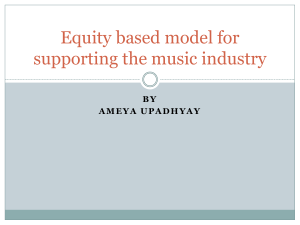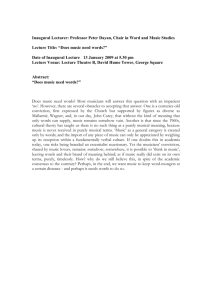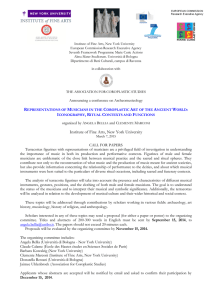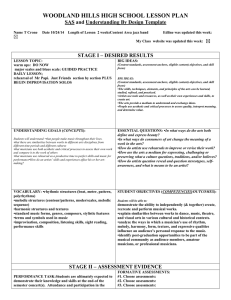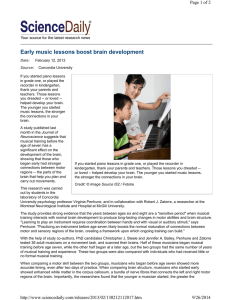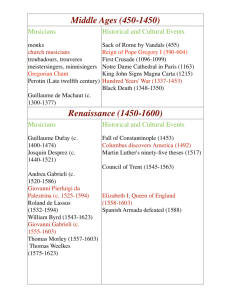Mass Media - Digital Image Pro
advertisement
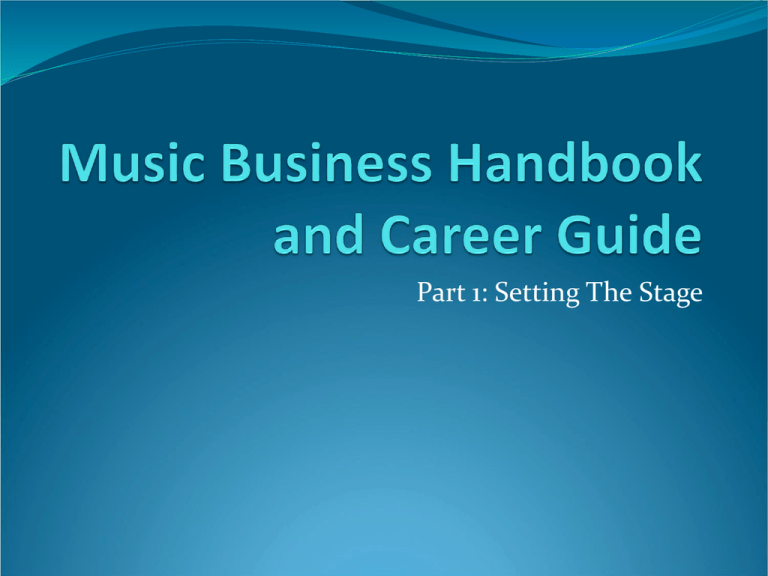
Part 1: Setting The Stage Chapter 1 Start Thinking. . . Is the music industry primarily about business, or about art? 2. How is the music industry different today than it was 100 years ago? What do you believe brought this change? 1. Chapter Goals Discover that the music business is large, growing, diverse, and ever changing. Become familiar with the historical development of music as a profession. Learn that music today is but one component of the arts, entertainment and communications industry. Music and Society Some 1.4 billion legal digital music downloads were sold in the United States in 2011 – compared with 19 million in 2003. Globally, legal music downloads totaled 3.6 billion in 2011. The number of paid subscribers to streaming music services increased by 65% in 2011 to 13.4 million worldwide. From the format’s introduction in 1982 to 2007, 200 billion music CDs had been sold worldwide, though this format is now in decline One in five Americans plays a musical instrument. These musicians spend more than $6.4 billion a year on instruments, accessories, and sheet music. Art Versus Commerce Previously consumer appetite for music = fat, happy music industry Now P2P file sharing + nontraditional and online retail + single track downloads = uncertainty for the music industry Art Versus Commerce Musicians and merchants can be both allies and natural enemies. Artists often want to: break creative boundaries be heard and appreciated as much as possible connect with their audience Music merchants often want to: fit the mainstream sales taste make as much money as possible connect with audience’s wallets Art Versus Commerce New technology brings many changes: new business models new contracts new licensing opportunities new definitions of artist label merchant/retailer music product Historical Development Finding a Paying Audience Early music was simply for artists’ pleasure. First western professional musicians were singers/actors in Greek and Roman theaters. Middle Ages religious musicians received no pay. 15th and 16th century German guilds improved conditions for musicians. European artists employed as house musicians. Historical Development Finding a Paying Audience Professional status came through the paying audience, especially in Italian and English musical theater and opera. By 1800s paying to hear a professional was generally accepted. Historical Development Finding a Paying Audience Professional musicians resulted in managers or agents. Mozart’s father P.T. Barnum Show-biz atmosphere for popular music developed minstrel shows growing size and affluence of middle class Music publishing houses emerged spotted popular hits employed in-house composers Historical Development Mass Media 1920s: Radio expanded elite audience developed new audience for folk music, country and western songs, blues, and jazz publishers fought broadcasting said it hurt sales of sheet music initially no income from broadcast performances Historical Development Mass Media Sound films usher further development synchronization rights musical films The Great Depression of 1930s saw: end of million-selling records sale of sheet music collapse vaudeville theater attendance drop radio broadcasting grow Historical Development Mass Media Growth of radio music publishers focused on radio stars song plugging grew to national enterprise regional publishing offices closed big bands became brand names band singers became popular singers Historical Development Mass Media Effects of World War II: Armed Forces Radio network by 1940s American style = world style returning G.I.s bought records music product factories reopened music industry reaching a mass market record companies moving millions of singles Historical Development Mass Media Columbia’s long-playing record 12 songs = 600% increase in income classic records = 10% of market Low cost tape-recorders High-fidelity sound Historical Development Mass Media The new music business attracted: new capital new merchants new distribution and merchandising methods rack jobbers large investments in record production Historical Development Mass Media The “money-tree” music industry the “Big 6” record labels’ catalogs released on CDs Music TV takes root MP3 format arrives Digital file sharing = mass media controlled by the masses The future? Tools of the Trade In times of rapid change, you need to stay informed. read the trades attend professional meetings read online music blogs study at accredited institutions learn from the professionals For Further Thought. . . Musical artists and music merchants are often considered natural enemies, holding different views on what music should be and do, but today they have to get along. What has forced this accommodation, this working relationship? 2. What influence has technology and communications had on the music industry? Give specific examples. 3. How is the life of an artist different today than it was in the Middle Ages? What has changed, and what remains the same? 1.
